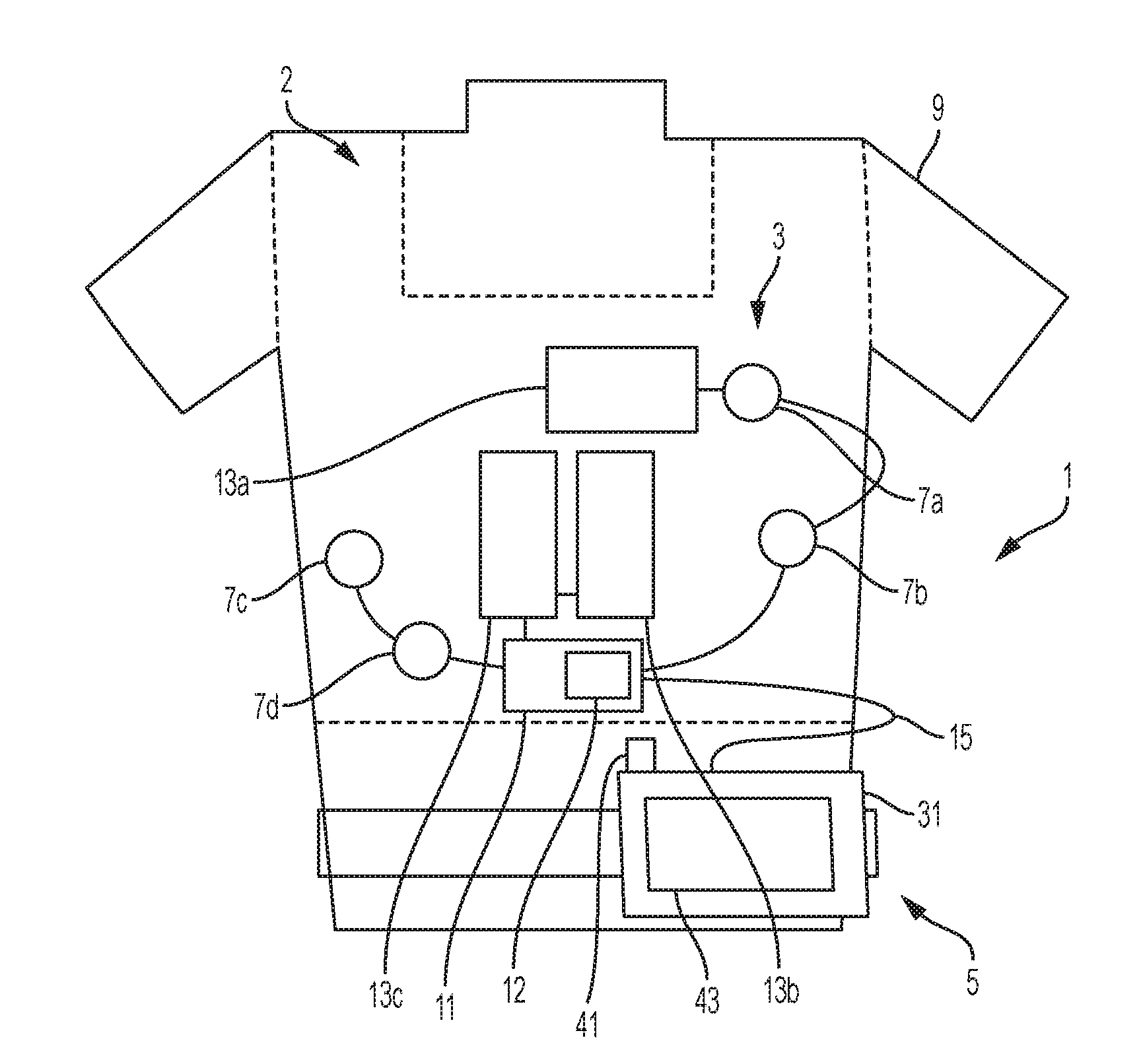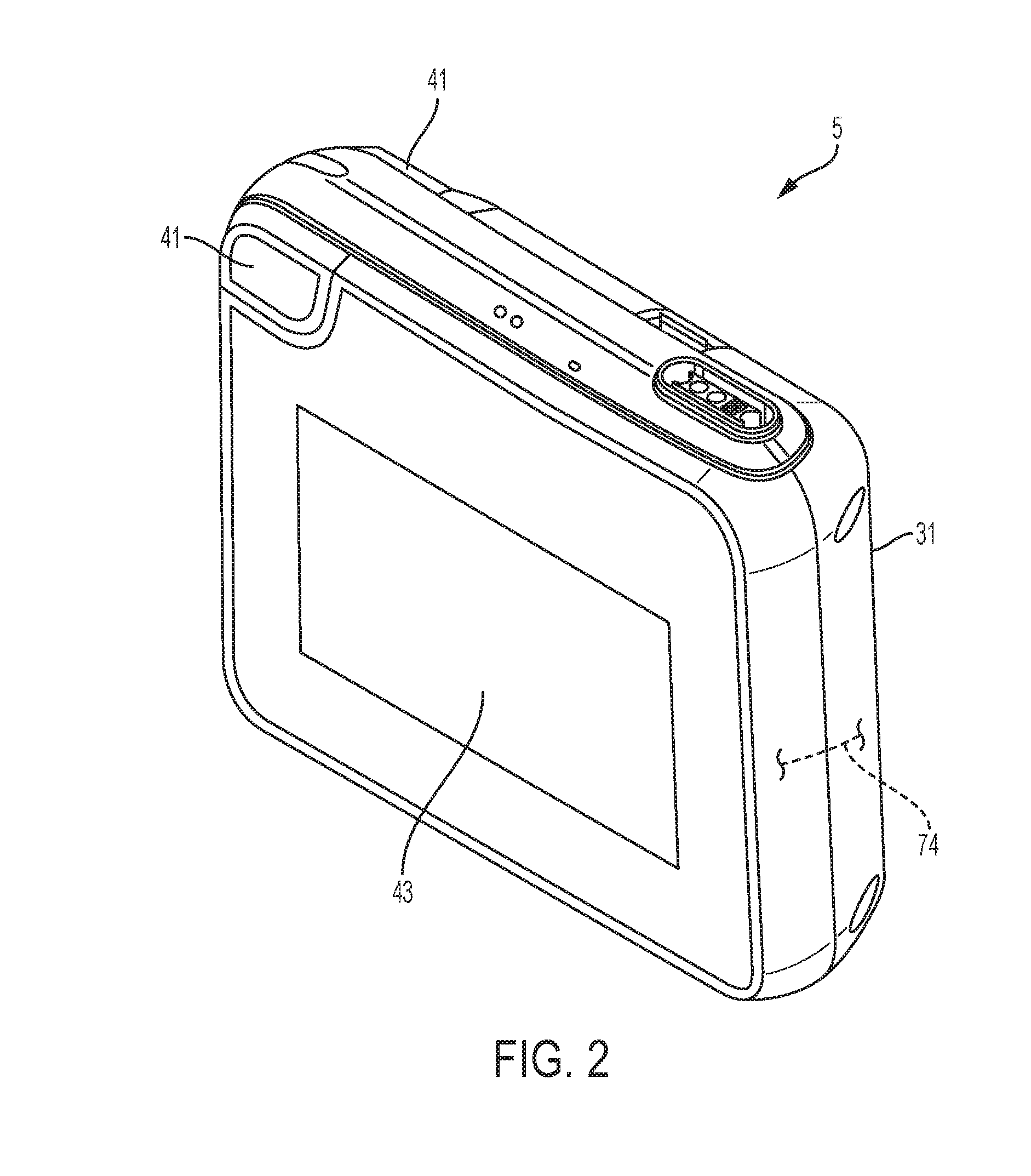Systems and Methods for Testing a Medical Device
a medical device and self-testing technology, applied in the field of wearable medical devices, can solve the problems of heart muscle stopping normal contractions and quivering, normal blood flow ceases, and death within minutes
- Summary
- Abstract
- Description
- Claims
- Application Information
AI Technical Summary
Benefits of technology
Problems solved by technology
Method used
Image
Examples
example medical
Device
[0125]In an example and with reference to FIG. 1, the medical device can be configured as a wearable defibrillator, denoted generally as reference numeral 1, such as the LifeVest® wearable defibrillator available from ZOLL® Medical Corporation of Pittsburgh, Pa. and Chelmsford, Mass. The wearable defibrillator 1 can be worn by a patient and can include a garment, generally denoted as reference numeral 2, an electrode assembly, denoted generally as reference numeral 3, and a monitor, denoted generally as reference numeral 5, operatively connected to the electrode assembly 3. The garment 2 can be configured as a harness, shirt, or other apparel and is configured to permit the patient to wear the defibrillator 1. The electrode assembly 3 can be configured to be assembled within the garment 2.
[0126]Such wearable defibrillators can be typically worn nearly continuously for two to three months at a time. During the period of time in which they are worn by the patient, the wearable d...
PUM
 Login to View More
Login to View More Abstract
Description
Claims
Application Information
 Login to View More
Login to View More - R&D
- Intellectual Property
- Life Sciences
- Materials
- Tech Scout
- Unparalleled Data Quality
- Higher Quality Content
- 60% Fewer Hallucinations
Browse by: Latest US Patents, China's latest patents, Technical Efficacy Thesaurus, Application Domain, Technology Topic, Popular Technical Reports.
© 2025 PatSnap. All rights reserved.Legal|Privacy policy|Modern Slavery Act Transparency Statement|Sitemap|About US| Contact US: help@patsnap.com



